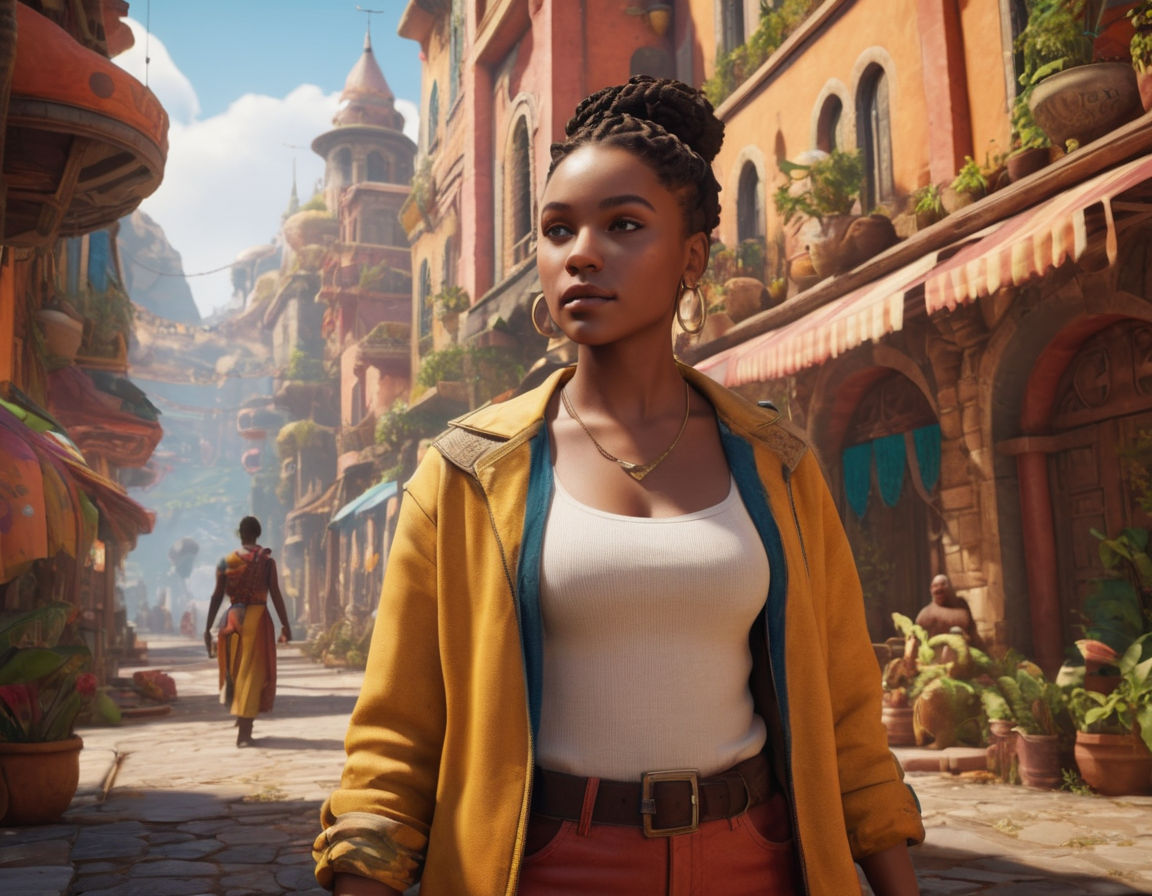Introduction
In the ever-evolving landscape of game development, the importance of Inclusive Game Design cannot be overstated. Designing games that cater to diverse audiences goes beyond just creating entertainment; it is about fostering a sense of belonging and ensuring that every player feels represented and included. The impact of inclusive game design extends far beyond aesthetics—it directly influences the player experience, making it more immersive and enjoyable for all individuals, regardless of their background or abilities.
Understanding Inclusive Game Design
At its core, inclusive game design is the practice of creating games that are accessible and enjoyable to a wide range of players, including those with varying needs and preferences. This approach involves considering diverse audiences at every stage of the game development process, from conceptualization to implementation. By incorporating features such as customizable controls, diverse characters, and inclusive narratives, developers can make their games more welcoming and engaging for everyone.
Significance of Considering Diverse Audiences
Inclusive game design is not just a noble pursuit; it is also a smart business decision. By prioritizing inclusivity in their games, developers can reach a broader audience and forge a deeper connection with players from different backgrounds. Moreover, designing with diversity in mind can lead to more innovative and creative gameplay experiences, as it encourages developers to think outside the traditional gaming norms and explore new ideas.
Benefits of Prioritizing Inclusivity
The benefits of prioritizing inclusivity in game design are manifold. Not only does it help create a more inclusive gaming community, but it also fosters a positive reputation for developers. Additionally, inclusive games are more likely to receive critical acclaim and recognition for their efforts in promoting diversity and representation in the industry. By embracing inclusivity, developers can set new standards for excellence in game development.
Importance of Catering to Diverse Audiences
In today's gaming landscape, it is more crucial than ever for game developers to focus on catering to diverse audiences. With a growing demand for games that are inclusive and representative of different identities, developers have a unique opportunity to tap into a vast market of players who are eager for more diverse gaming experiences. By creating games that resonate with people from all walks of life, developers can not only drive sales but also make a lasting impact on the gaming industry as a whole.
Market Demand for Inclusive Games
The market demand for inclusive games is steadily rising, with players expressing a strong desire for more diverse and inclusive content. As players become more vocal about the need for representation in games, developers are increasingly recognizing the importance of catering to a broad range of audiences. Games that embrace inclusivity not only have the potential to attract a larger player base but also to cultivate a loyal and dedicated community of fans who feel seen and valued.
Examples of Successful Games

Several games have set a precedent for embracing inclusivity and showcasing the power of diverse storytelling. Titles like "The Last of Us Part II," with its groundbreaking representation of LGBTQ+ characters, and "Celeste," which explores themes of mental health and self-discovery, have received widespread acclaim for their inclusive narratives. These games not only resonate with players on a personal level but also pave the way for a more inclusive and diverse gaming industry.
Strategies for Designing Inclusive Games
Designing games with inclusivity in mind is crucial for reaching a wide and diverse audience. Developers can employ various practical strategies to ensure that their games are accessible and enjoyable for everyone. These strategies not only enhance the gaming experience but also contribute to a more inclusive gaming community.
Accessibility Features: Incorporating accessibility features such as customizable controls, color-blind modes, subtitles, and adjustable difficulty levels can make games more inclusive for players with diverse needs.
Diverse Representation: Including diverse characters, storylines, and cultures in games can help players from different backgrounds feel represented and included.
User Testing: Conducting user testing with a diverse group of players can provide valuable feedback on the inclusivity of the game. Developers can gather insights on potential barriers and areas for improvement.
Addressing the challenges that developers may face in implementing inclusive design practices is vital. Some challenges include balancing creative vision with accessibility, resource constraints, and overcoming unconscious biases. Overcoming these challenges requires a commitment to inclusivity and a willingness to adapt design processes.
To enhance player experience through inclusivity, developers can focus on creating a welcoming and engaging environment for all players. By actively listening to player feedback, being open to suggestions, and continuously improving accessibility features, developers can create games that resonate with a broader audience.
Case Studies of Inclusive Game Development
Examining successful case studies of games that have prioritized inclusivity can offer valuable insights for developers. These case studies showcase how inclusive design principles can positively impact player engagement, satisfaction, and overall success of a game.
"The Last of Us Part II": This game received acclaim for its diverse cast of characters, including LGBTQ+ representation. By incorporating a range of experiences and identities, the game resonated with a broad audience and contributed to its commercial success.
"Celeste": Known for its accessibility features, "Celeste" offers various customizable options for players with different skill levels. This approach not only made the game more inclusive but also garnered praise for its thoughtful design.
Analyzing these examples can help developers understand the practical implementation of inclusivity in game design and inspire them to embrace similar strategies in their projects. Key takeaways include the importance of representation, user-centered design, and continuous improvement based on player feedback.
Tools and Resources for Inclusive Game Development
Inclusive game development can be facilitated by utilizing tools and resources specifically designed to support developers in creating accessible and diverse games. These resources offer guidance, templates, and community support to aid developers in their inclusivity efforts.
Includification: A comprehensive guide by the Game Accessibility Guidelines that provides best practices and recommendations for making games more accessible to all players.
Game Accessibility Nexus: This website offers a range of resources, including articles, reviews, and tools to help developers enhance the accessibility of their games.
Inclusive Game Design Toolkit: An interactive toolkit that guides developers through the process of creating inclusive games, emphasizing the importance of diversity, representation, and usability.

By leveraging these tools and resources, developers can gain valuable insights, stay updated on best practices, and connect with like-minded communities passionate about inclusivity in game development. Embracing these resources can empower developers to create games that cater to a diverse audience and contribute to a more inclusive gaming landscape.
The Future of Inclusive Game Design
In today's rapidly evolving gaming industry, Inclusive Game Design has become not only a buzzword but a fundamental aspect of game development. Developers are increasingly realizing the importance of creating games that cater to diverse audiences to enhance player experience and engagement.
Evolving Landscape:
Inclusive game design is no longer just an option but a necessity. The industry is witnessing a shift towards more inclusive and accessible games. Developers are striving to create environments where players from all backgrounds feel represented and welcomed. Whether it's ensuring gender diversity in characters, incorporating features for players with disabilities, or offering language options, inclusivity is taking center stage in game development.
Upcoming Trends and Innovations:
Looking ahead, the future of inclusive game design is promising. Developers are exploring innovative ways to make games more inclusive. Virtual reality (VR) and augmented reality (AR) technologies are being leveraged to create immersive experiences for a broader audience. Additionally, the rise of cloud gaming is breaking down barriers to entry, allowing players from different devices and locations to come together in one virtual space.
Importance of Inclusivity:
As the gaming landscape continues to expand, the importance of inclusivity cannot be overstated. Inclusive game design not only attracts a wider player base but also fosters a sense of community and belonging within the gaming world. By representing diverse characters, addressing accessibility needs, and celebrating cultural differences, developers can create truly inclusive gaming experiences that resonate with players on a personal level.
Conclusion
In conclusion, Inclusive Game Design is not just a trend; it's a movement towards a more welcoming and engaging gaming environment. By prioritizing inclusivity, developers have the power to shape the future of gaming for the better.
In summary, considering diverse audiences in game development is crucial for success in the modern gaming industry. Developers play a pivotal role in creating inclusive spaces where all players can feel represented and valued. By prioritizing inclusivity, developers can enhance player engagement, satisfaction, and ultimately, the overall gaming experience.
Let's encourage developers to continue pushing the boundaries of inclusive game design and to embrace diversity as a driving force behind innovation in the gaming industry. By doing so, we can create a gaming culture that is truly inclusive, vibrant, and reflective of the diverse world we live in.




